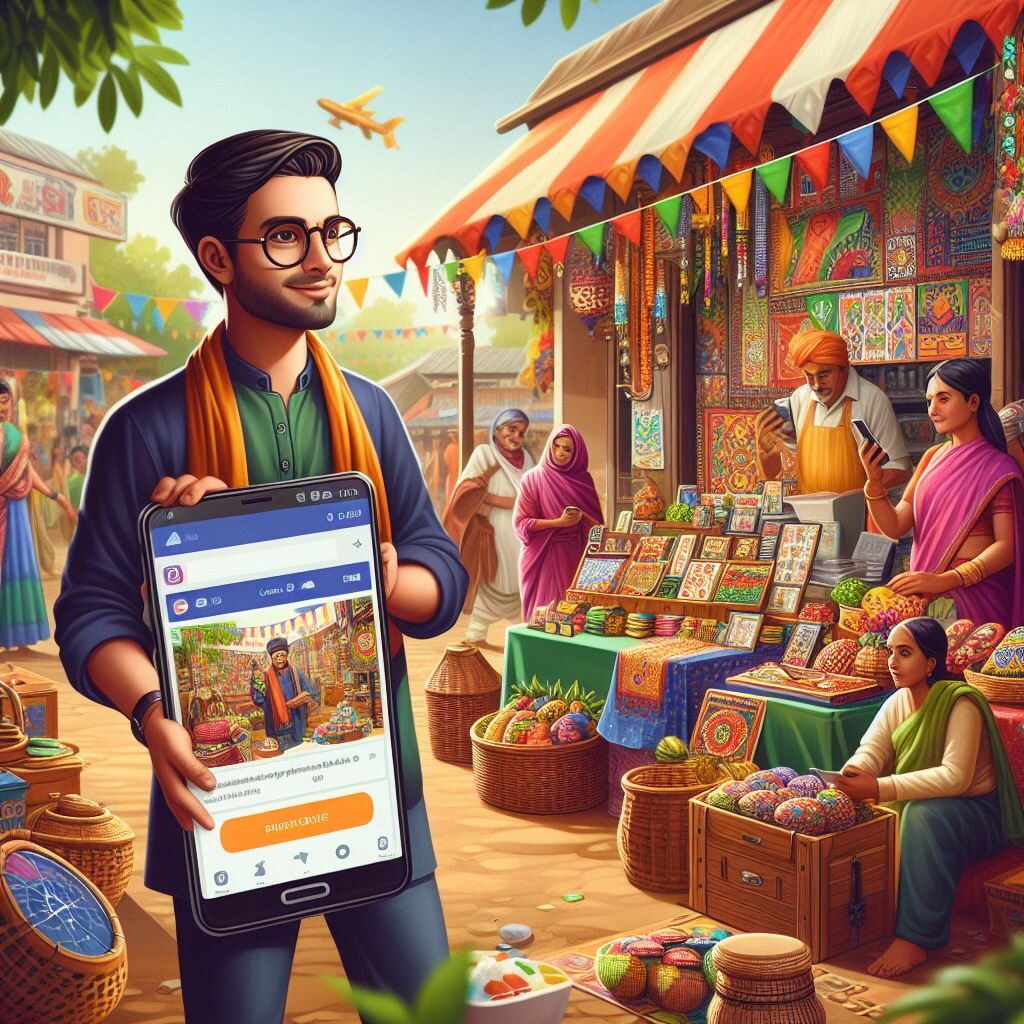Importance and Benefits of Digital Marketing for Small Businesses - NSK MultiServices

Small businesses must leverage digital marketing to scale up and stay competitive. With consumers increasingly turning to the internet for research and purchases, businesses need to manage the pre-purchase consumer experience (Reviews) effectively. This article presents ten statistics from 2023 that highlight the importance or benefits of digital marketing for small businesses.
The Global Consumer Insights Pulse Survey
India perspective reveals that consumers heavily rely on smartphones for pre-purchase research, with e-commerce websites, search engines, and traditional TV ads influencing their buying decisions significantly.
This emphasizes the importance of digital marketing strategies for businesses to connect with consumers early in the purchasing process and shape their decisions effectively.
In this age of digital dominance, politicians are also utilizing digital marketing strategies to connect with their Voters. Read further to learn about digital marketing tailored for politicians.
1) Early Engagement in the Purchasing Process
According to the Global Consumer Insights Pulse Survey: India perspective, around 5 in 10 India consumers almost always or frequently use their smartphone in-store for price comparison or to view live product reviews before making a purchase.
This highlights the need for businesses to connect with consumers very early in the purchasing process and address their point of decision.
2) E-commerce and Search Engines as Top Pre-purchase Information Sources
For 5 in 10 India consumers, e-commerce websites and search engines are the top sources of pre-purchase information, while 3 in 10 check in with their family, friends, and colleagues before deciding on a purchase.
This emphasizes the importance of search engine optimization and e-commerce presence for businesses targeting Indian consumers.
3) Traditional TV and Sponsored Social Media Ads Influence Purchase Decisions
Nearly 4 out of 10 India consumers are influenced by traditional TV and sponsored social media advertisements in their purchase decisions. Businesses should consider these channels to reach consumers before a purchase is made.
4) In-store Retail Experience Preferred Over Online Shopping
Despite the convenience of online shopping, consumers still prefer the in-store retail experience. In the last 12 months, 49% of consumers in India and 41% of consumers globally preferred to shop for items such as clothes, books, and electronics from a physical store.
Small businesses should be available online as well as offline to reach a wider audience, increase their sales, and adapt to the changing market dynamics.
The COVID-19 pandemic has accelerated the shift from offline to online, and small businesses need to adapt to this trend to stay competitive. According to a report by BigCommerce, e-commerce sales are expected to reach $6.4 trillion by 2024, and small businesses can tap into this market by taking their offline stores online
5) Connected Lifestyle Technologies Gaining Traction
Smart home voice assistants and wearable devices are slowly gaining popularity as preferred channels for shopping. In India, 14% of consumers used voice assistants daily to place orders, 13% used them weekly, and 17% used them monthly.
6) Early Adopters Driving Technology Trends
About 31% of India consumers want the latest cutting-edge technology as soon as it is available, indicating that businesses catering to early tech adopters can build a competitive advantage.
7) Metaverse Adoption Growing
Globally, 34% of consumers have interacted with the metaverse in the last six months, and India consumers are more upbeat about its potential, with 51% engaging in metaverse-related activities in the last six months1.
8) Evaluation Happens as a Continued Process
Consumers consult multiple sources for information on a desired product, recheck it on trusted forums, and form their opinion simultaneously as they go about loading their shopping cart1.
9) Social Media Influences Consumer Decisions
29% of consumers in India and 31% globally use social media to research a product before purchase, highlighting the importance of social media marketing for businesses1.
10) Smartphones Empower Consumers for Pre-purchase Research
Around 66% of consumers in India use their smartphones to research a product online for competitive prices, special offers, and availability, emphasizing the importance of mobile optimization for businesses.
Concussion
These statistics from 2023 underscore the importance and benefits of digital marketing for small businesses looking to scale up. By investing in search engine optimization, e-commerce presence, social media marketing, and mobile optimization, businesses can effectively reach and influence consumers in the pre-purchase stage, ultimately driving growth and success.
Leveraging digital marketing isn’t just an option; it’s a necessity for small businesses aiming to scale up and stay competitive.
Source :
- https://www.pwc.in/industries/retail-and-consumer/global-consumer-insights-pulse-survey-india-perspective.html
- https://www.bigcommerce.com/blog/ecommerce-challenges-infographic
Frequently Asked Questions
Q: What is the primary benefit of digital marketing for small businesses?
A. The primary benefit of digital marketing for small businesses is its cost-effectiveness and ability to target specific audiences, leading to increased visibility, higher conversion rates, and improved ROI compared to traditional marketing methods.
Q: Do small local businesses use digital marketing?
A. Yes, small local businesses use digital marketing to enhance their online presence, engage with customers, and drive sales through cost-effective strategies like local SEO, social media marketing, and content creation.
Q: How can digital marketing help small businesses to build relationships with customers?
A: Digital marketing is a great way for small businesses to build relationships with customers. By interacting with customers through digital channels, businesses can create a rapport and build trust. This is essential for small businesses, as it can be difficult to compete with larger businesses on customer service
Q: How does digital marketing help small businesses to reach their target audience?
A: Digital marketing allows businesses to target their advertising to a specific audience, which is done by using data to understand the demographics, interests, and needs of the target audience. With this knowledge, businesses can create advertising that is more likely to resonate with the target audience, and that is more likely to lead to conversions
About
Nandeshwar
Nandeshwar is a versatile professional skilled in digital marketing and App/Web development. With 5 years of experience and a Diploma in Computer Engineering, they excel in crafting effective marketing strategies and building dynamic websites. Specializing in content marketing, they drive results for clients while creating visually stunning websites using WordPress, Laravel, PHP and Flutter. Beyond work, they stay updated on industry trends and enjoy sharing insights.



